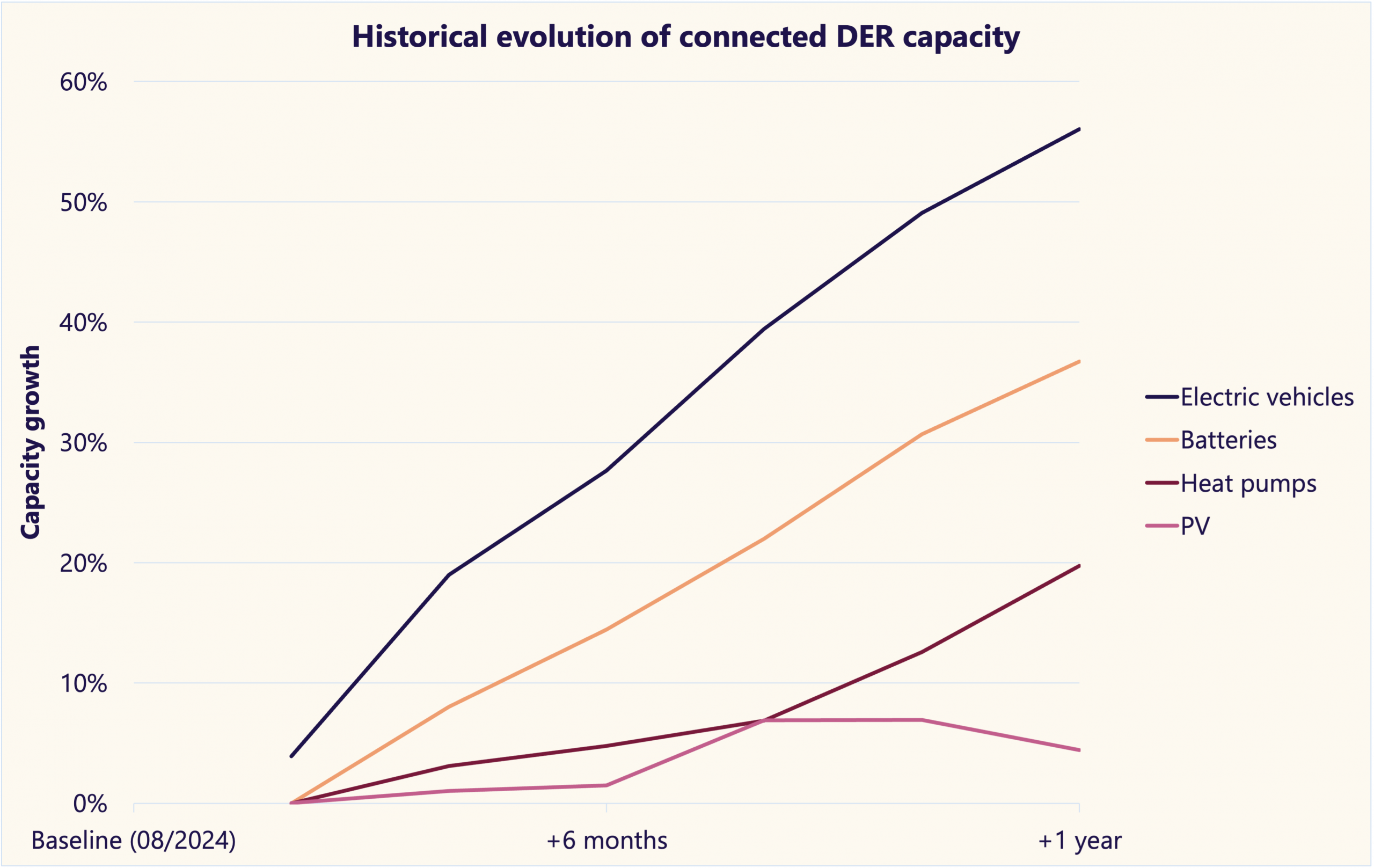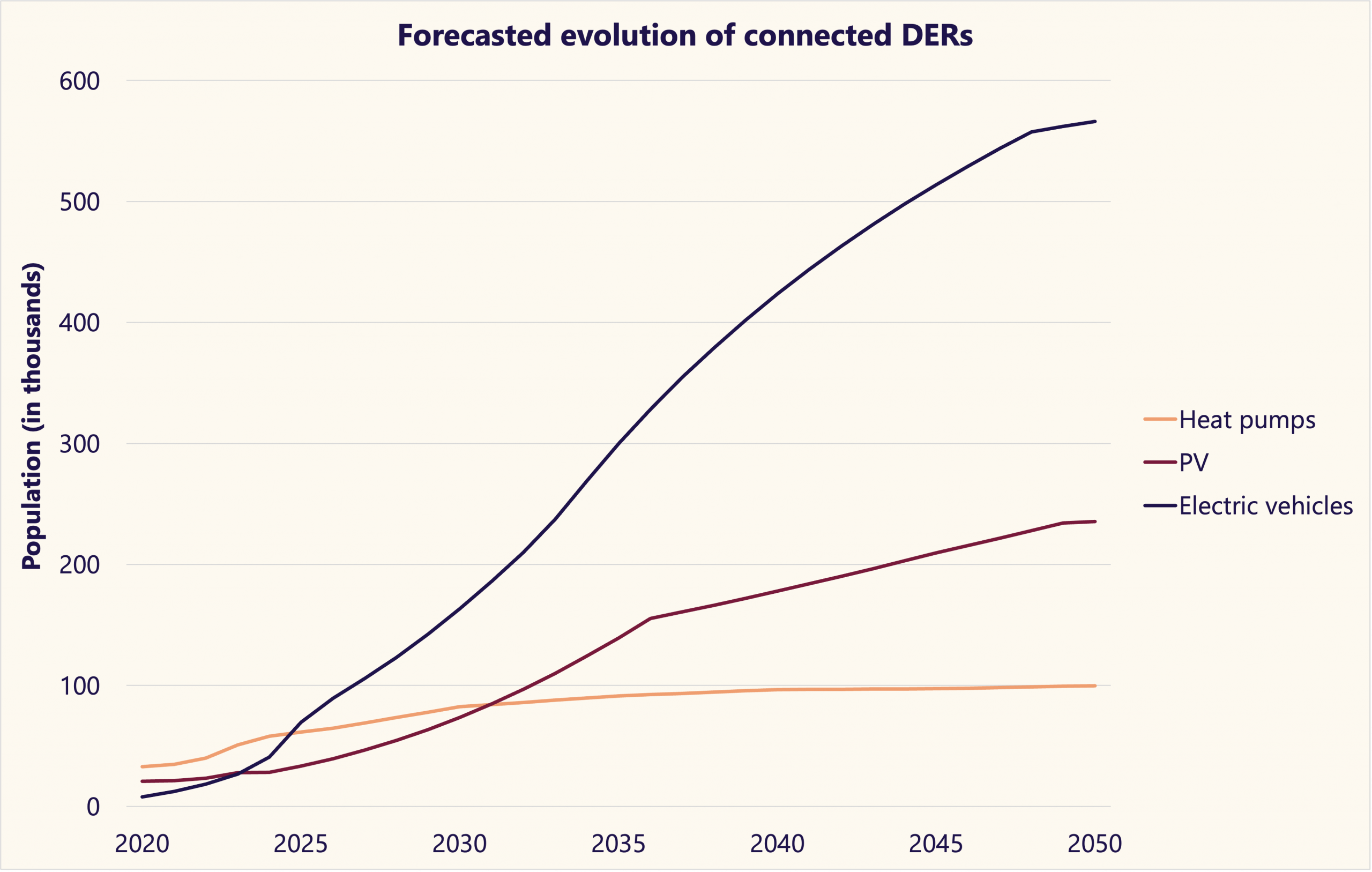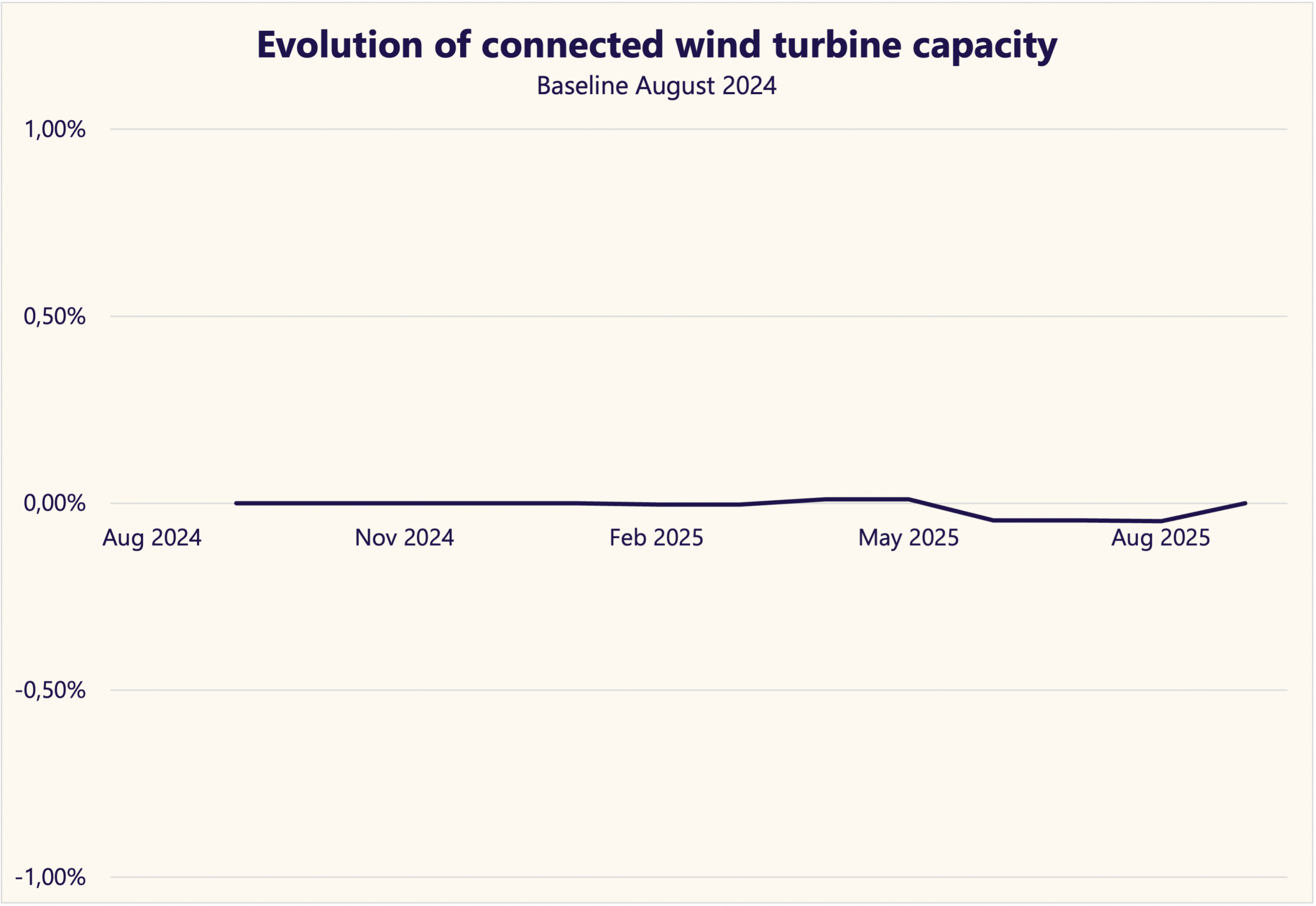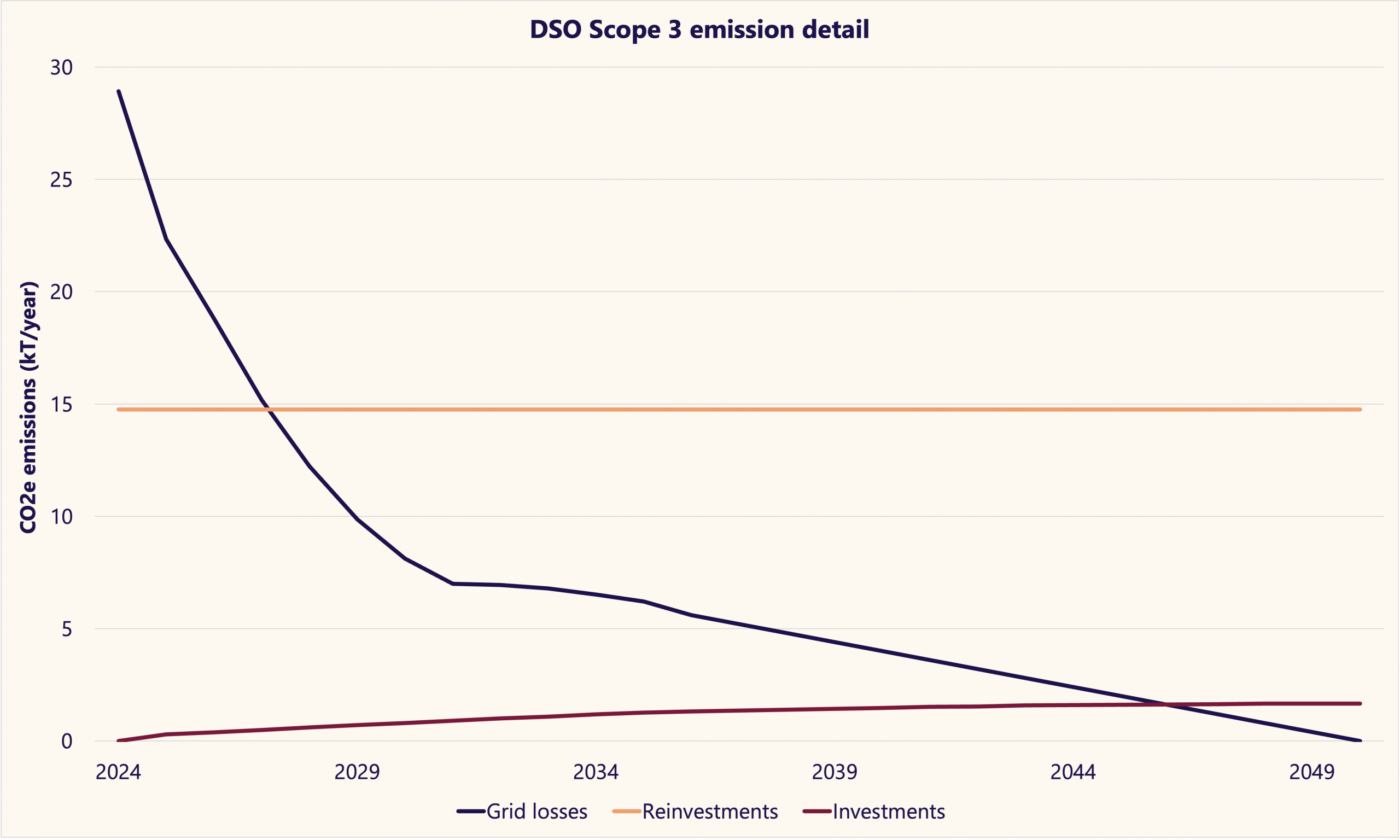Distributed Energy Resources & CO2 emissions – Where do distribution grids stand?
26 September 2025
At Utiligize, we are in a privileged position to get unique and valuable insights into what is happening around electric grids and the green transition.
Thanks to the data that our customers share with us and the analysis we run, we have compiled numbers around historical and future distributed energy resources (DER) penetration, the situation around wind turbines, as well as emissions related to the operations of electric grids.
Across Denmark, data from selected distribution system operators (DSO) clearly shows the pace of green transition: electric vehicles, batteries, PV installations, and heat pumps are multiplying faster than ever. In particular, the number of electric vehicles has increased massively, along with the capacity of connected batteries. While the total capacity is still modest, the growth is significant as it signals a future where the grid capacity will have to increase to accommodate a carbon-neutral society, or the use of other measures such as flexibility will be critical to keep the grid stable.

This is only the beginning. Forecasts from the Danish Energy Agency show that the wave of electrification will continue to surge. EVs, PVs, and heat pumps will play a defining role in driving the green transition. These forecasts are one of the many data sources we use to create scenarios for our customers, providing precise estimates of the time, location and magnitude of the loading increase, resulting in upgrade and investment needs.
These investments are key to make sure the DERs can be connected to the grid and unlock the full green transition potential.

And here lies the challenge of this dynamic evolution:
DSOs don’t just need to handle the technical complexity of planning for an electrified future; they need to do it with limited human resources. Every new EV charging point, battery, or heat pump requires assessment and approval. Multiply that by thousands, and the traditional manual process quickly becomes a bottleneck to the green transition.
The connection backlog of many utilities keeps growing, and dissatisfied customers must wait months or even years before getting the approval of their connection. Grids can either be the enablers or the preventers of the green transition, and the actions utilities take today will decide on which side of the equation they fall.
While many DERs show a dynamic and positive evolution, the situation across wind turbines is a lot less optimistic.
In the past 12 months, selected Danish DSOs have reported no increase in wind turbine capacity.

Why is wind lagging compared to other DERs?
Wind turbine projects face a complex approval process involving multiple authorities, environmental considerations, land-use restrictions, and grid permissions. This, combined with upcoming municipal elections in winter 2025 pushes developers and local politicians to put wind development projects on hold to not grudge local communities.
On top of this, the latest public auctions for large offshore wind farms came with unattractive terms:
- No subsidies
- 20% mandatory state ownership
- A 30-year payment structure based on outdated assumptions
Add supply chain issues and rising material costs to an already low-margin industry, and it’s no surprise that some auctions had no bidders at all.
Meanwhile, electrification in Denmark continues to accelerate, driving up the need for new electricity generation. With no additional wind capacity, the transition is increasingly dependent on electricity imports and small-scale distributed resources. Unlike wind, however, these resources are not required to deliver the same ancillary services defined in grid codes, therefore creating a gap that risks slowing down the phase-out of conventional power plants.
So the question is how to get this curve to increase to guarantee safety of supply and energy sovereignty in the future?
Do grid operators only have a positive carbon impact on society?
The previous sections highlight how they make sure more and more decarbonated technologies can integrate society. However, this comes at a cost of certain emissions, which can though be optimised and minimised.
Grid operators don’t generate electricity and therefore don’t fall directly under the main emission reduction targets. Still, they carry a clear societal responsibility to reduce the CO₂ emissions linked to their activities.
Where do these emissions come from?
- Scope 1: This is not applicable, since DSOs do not manufacture goods.
- Scope 2: Energy consumption for their own facilities (electricity, heating).
- Scope 3: Indirect emissions, which make up the largest share:
- Grid losses: Currently a major driver of emissions, expected to decline as the energy mix decarbonises.
- Reinvestments: Replacing aging assets to keep the grid running.
- New investments: Expanding the grid for electrification and renewables. This share will grow, but remains smaller than reinvestments.
- Operations: Activities such as site visits, repairs, and equipment replacement.

How can DSOs reduce these emissions?
- Scope 2 emissions by choosing carbon-neutral energy suppliers.
- Lower grid losses by reinforcing heavily loaded assets (losses scale quadratically with load).
- Reduce investment-related emissions by sourcing equipment from low-carbon manufacturers (e.g., SF₆-free switchgear).
- Offset unavoidable emissions via CO₂ certificates.
At Utiligize, we have developed Forecast & Investment to give DSOs valuable, data-driven and easy to grasp insights around the past, current and future state of their grids. Thanks to our long-term forecast and a unique load flow-based tool running simulations on an hourly base until 2050, second guessing around future grid development is replaced by clarity, reliability and powerful decision making.
Our product covers historical DER identification, scenario-modeling based on customisable data sources, and CO2 emissions. It enables DSOs to adjust parameters to reflect their unique circumstances. If you would like to learn more about it, please reach out through the contact form and we will organise a product demonstration for you and answer your questions.